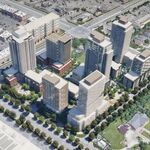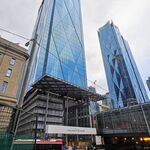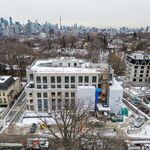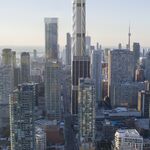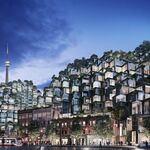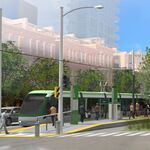As we near July 1, the apex of the Canada 150 celebrations, what exactly we are celebrating comes with increasing scrutiny. Canada's sesquicentennial marks the anniversary of Confederation—the joining together of Ontario, Quebec, New Brunswick, and Nova Scotia—four British colonies. Since then our country has grown, both in size—incorporating nine additional provinces and territories—and status, having developed from colonial outposts into what some political pundits suppose may be the new "Leader of the Free World". It would follow that with these expansions, what a Canadian is has developed in tandem. The Canadian identity, which has been under similar scrutiny as the pomp and circumstance nears, has shown itself to be as multifaceted and mutable as the history of this country.
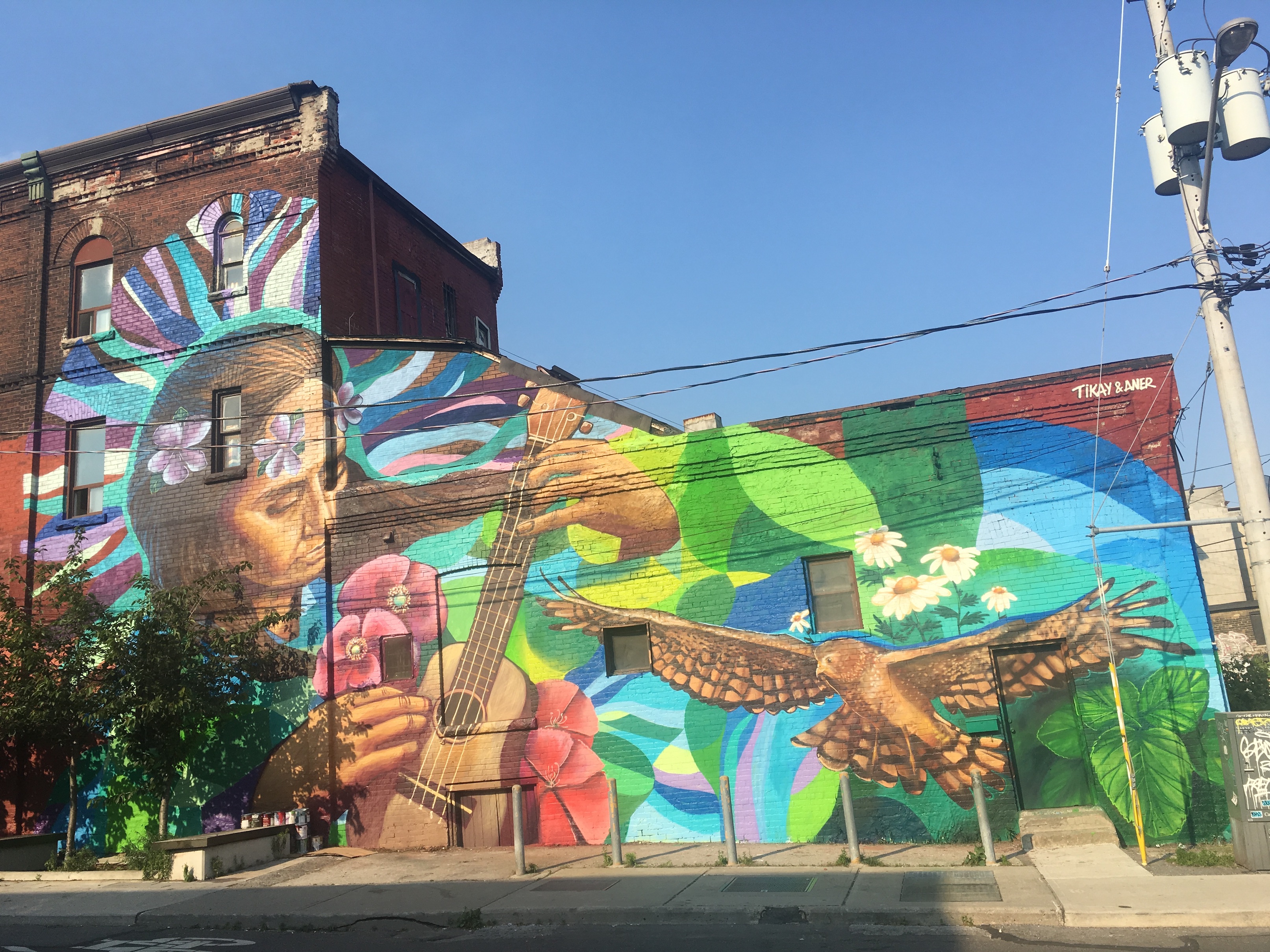 Violetta Parra Mural at Dundas and Brock, photo by Salena Barry
Violetta Parra Mural at Dundas and Brock, photo by Salena Barry
Indigenous communities, in particular, have a long and fraught relationship with the notion of a Canadian identity. This was explored and critiqued in the months leading up to our Canada day celebrations with artists like Kent Monkman who retold Canada's history from present day to 150 years prior to Confederation. As Monkman expounded in his multimedia project at Art Museum at the University of Toronto, there is a need to tell and celebrate the multitude of narratives, stretching around the globe, that have woven together to create the country that we will be celebrating in a few weeks.
It was in this vein that the Dundas and Dufferin community celebrated the unveiling of two murals created by Paula Tikay and Aner Urra, two indigenous Mapuche artists from Chile, in collaboration with children from the nearby Alexander Muir / Gladstone Avenue Junior and Senior Public School and The Grove Community School. These public artworks addressed indigeneity in both the Canadian and international contexts. At the opening ceremonies and ribbon cutting, Ward 18 Councillor Ana Bailão, Street Art Toronto (StART) Project Manager Lilie Zendel, and artist Aner Urra spoke. The event coincided with the conclusion of World music hub Lula Lounge's Lulaworld Festival at which a tribute to the centenary of Violetta Para's birth – a subject of one of the murals – was celebrated.
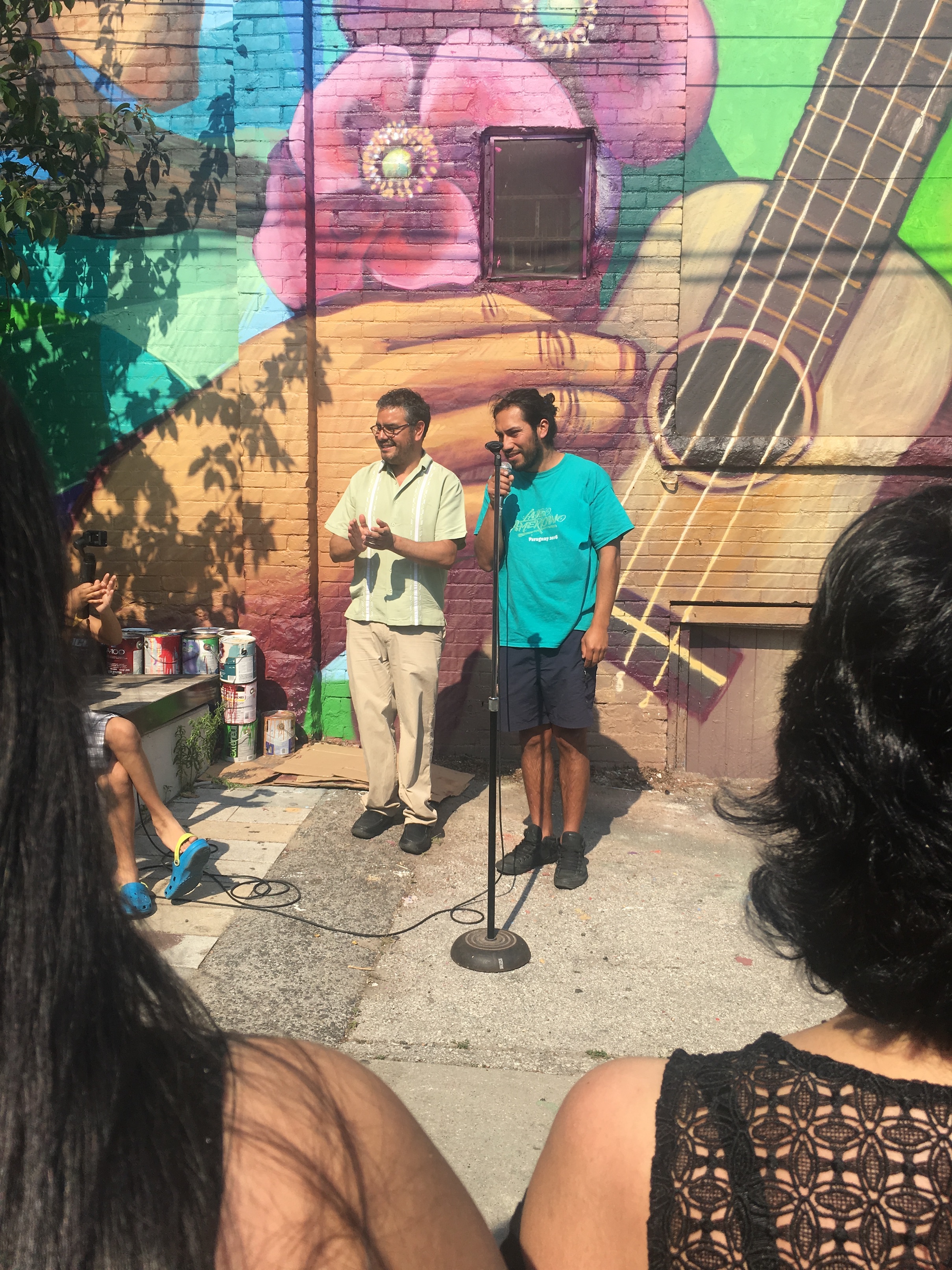 Rodrigo Ardiles (left) and artist Aner Urra (right) speaking at mural unveiling, photo by Salena Barry
Rodrigo Ardiles (left) and artist Aner Urra (right) speaking at mural unveiling, photo by Salena Barry
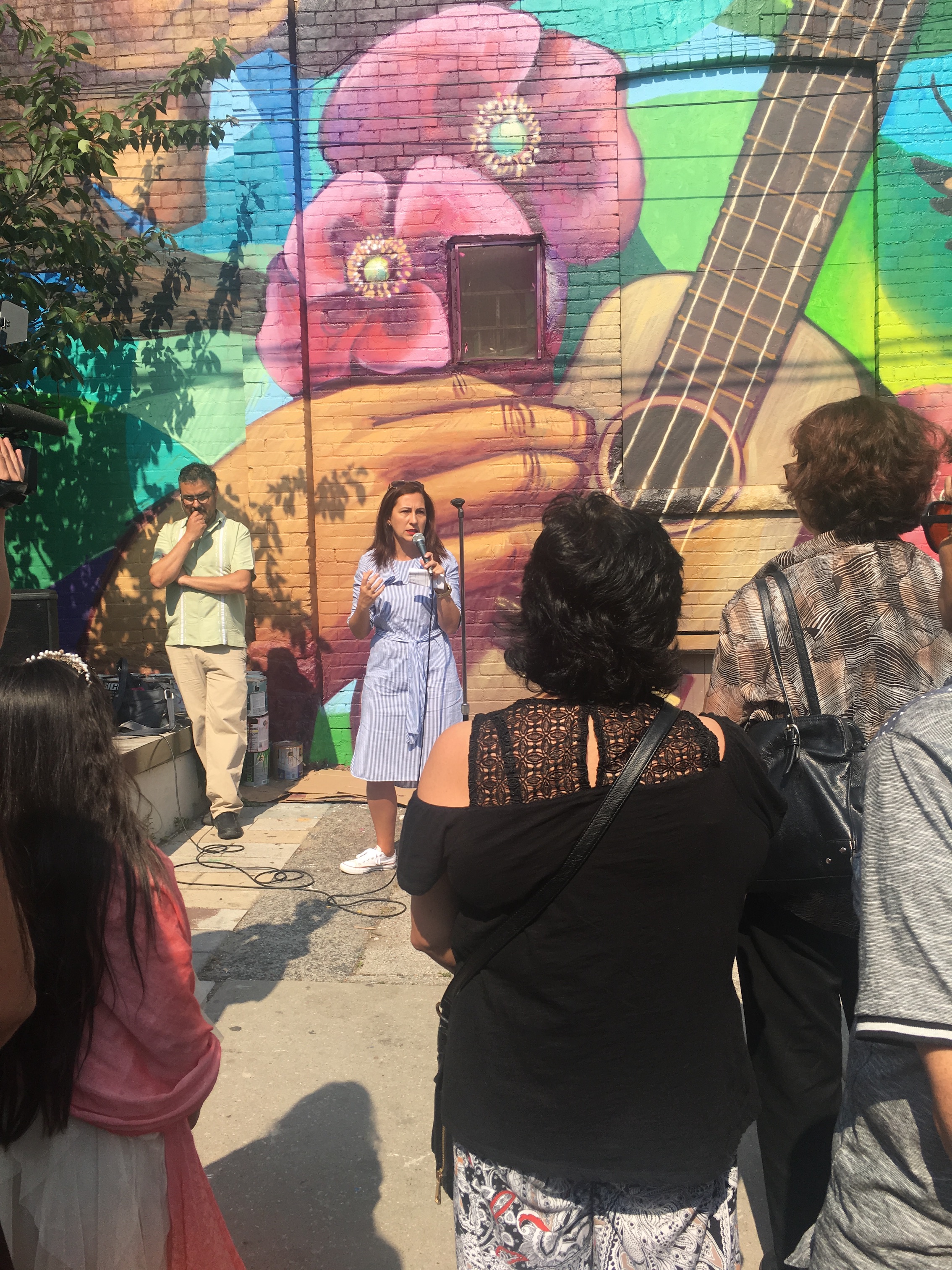 Ward 18 Councillor Ana Bailão speaking at mural unveiling, photo by Salena Barry
Ward 18 Councillor Ana Bailão speaking at mural unveiling, photo by Salena Barry
The first mural—located at 1615 Dundas Street West (Dundas and Brock)—depicts the Chilean composer, singer- songwriter, ethnomusicologist, and visual artist Violeta Parra playing the guitar. Beside her there is a large image of a hawk surrounded by flowers and vibrant greens and blues. Parra was a vocal advocate for indigenous peoples in Chile and was the first Latin American visual artist to have a solo exhibition at the Louvre in 1964. Artist Paula Tikay explained that the mural was inspired by two of her songs el gavilán—(the hawk) and la jardinera (the gardener)—as the hawk on the southern part of the mural and the flowers surrounding Parra's head illustrate. Tikay, who is of Mapuche descent, explained that Para, although not an indigenous Chilean, was one of the first women in her country to celebrate and promote indigenous culture.
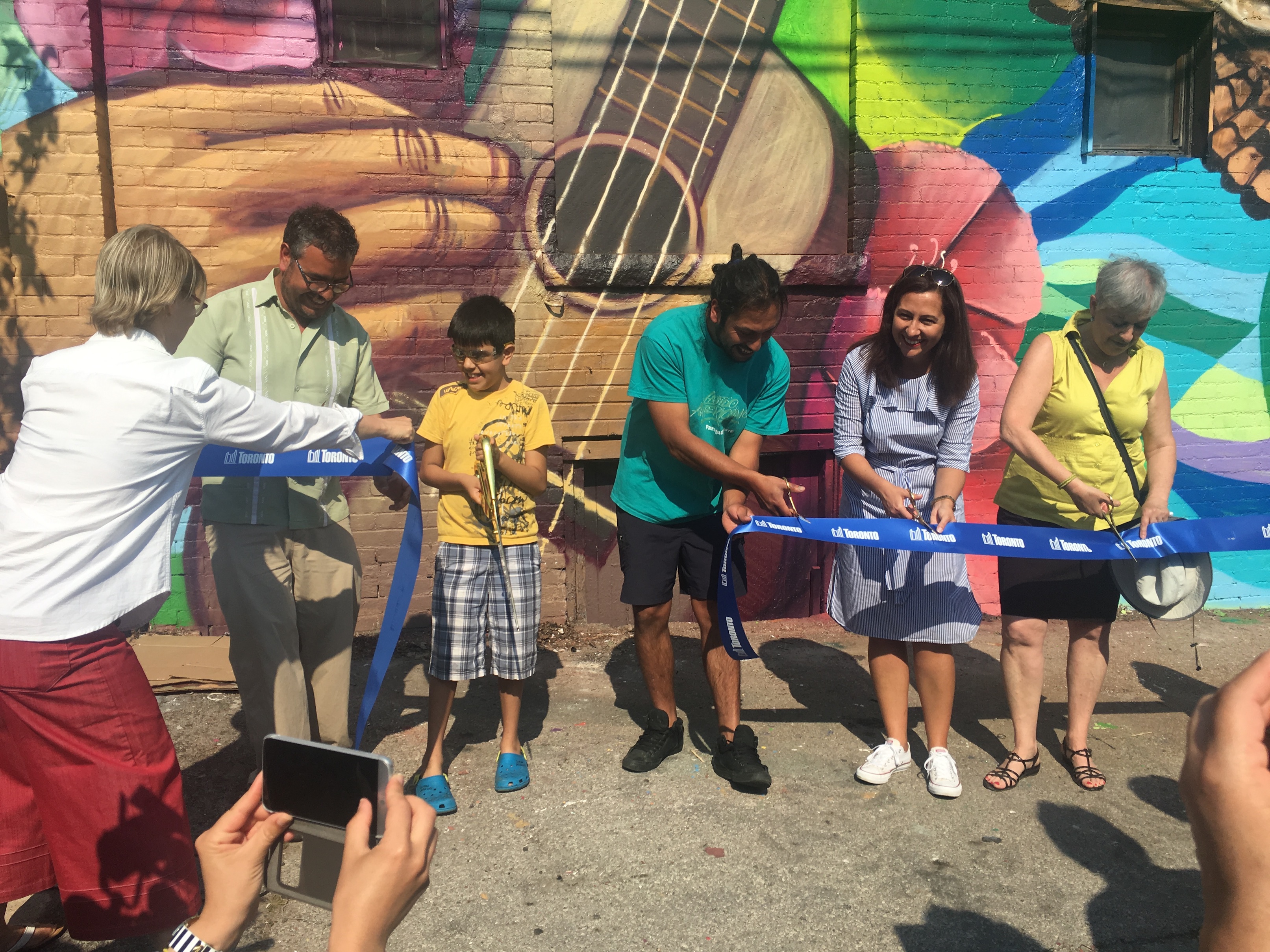 Ribbon Cutting in front of Violetta Parra Mural, photo by Salena Barry
Ribbon Cutting in front of Violetta Parra Mural, photo by Salena Barry
At the opening ceremonies, Rodrigo Ardiles, who orchestrated the murals' commission, explained that the Dufferin and Dundas neighbourhood has a decades-long relationship with Chile. In the 1970s the neighbourhood became home to many Chilean refugees who fled the country in the wake of the military coup led by Pinochet which toppled the Allende government. The decision to depict Parra in the mural is both a tribute to the contributions of Chilean Canadians, and a way for them to mark their community on the built landscape.
Ardiles got the idea for this mural after a trip to Chile, where he met with Paula Tikay and Aner Urra, two street artists from the countryside just outside of Santiago who had been collaborating for three years. When he returned to Toronto, he began laying the plans for his project by getting permission from the owners of the two buildings where the murals are now located and submitting the project to StART. Ardiles then held community consultations at neighbourhood schools, which later had some of their students collaborate on the artwork.
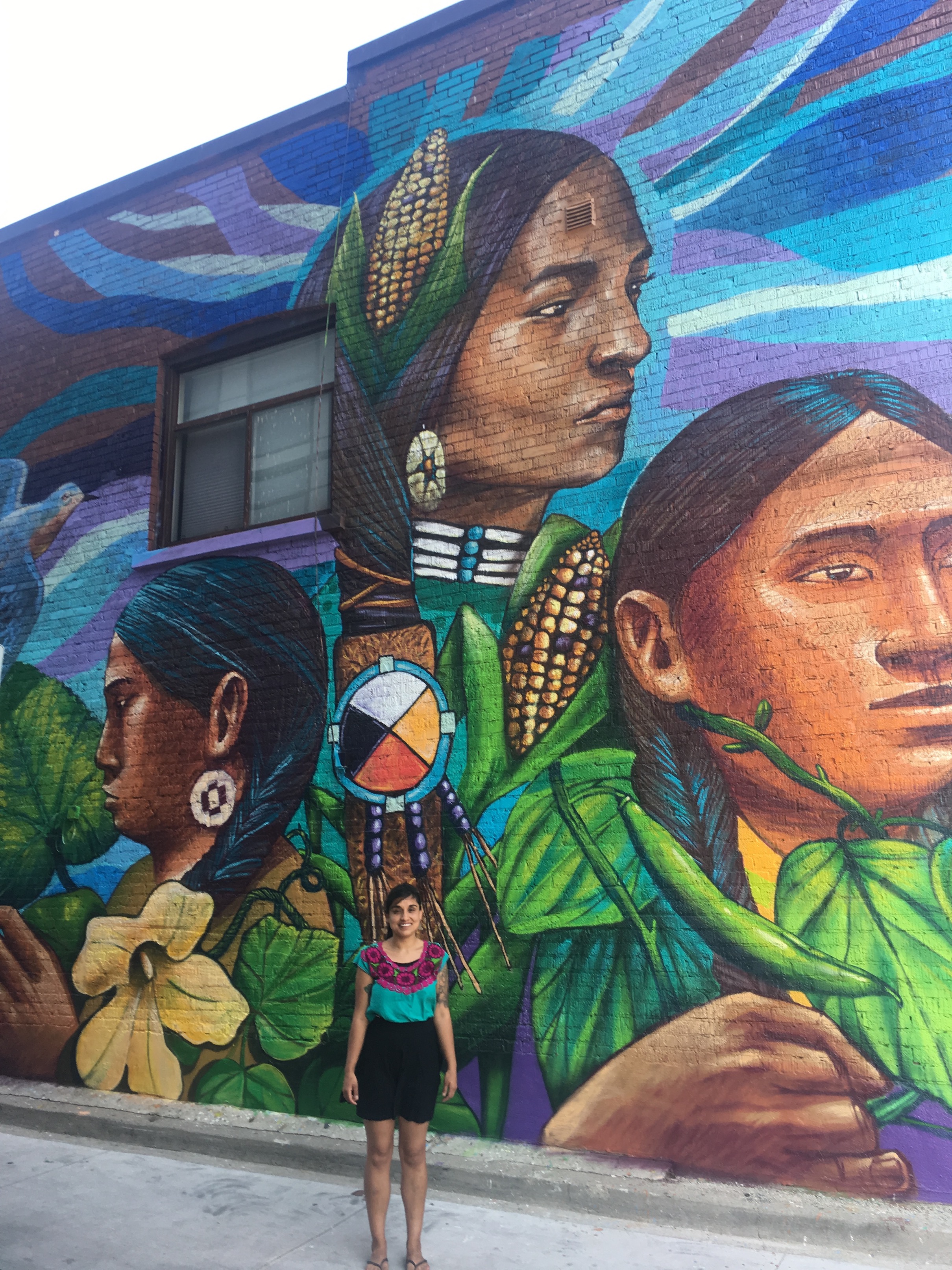 Artist Paula Tikay in front of Three Sisters Mural, photo by Salena Barry
Artist Paula Tikay in front of Three Sisters Mural, photo by Salena Barry
The second mural, located just east of Dundas and Sheridan on the north side, depicts The Three Sisters. This is the name given to three agricultural crops: maize, climbing beans, and squash, which were grown together, using an agricultural technique called companion planting. The Iroquois (among other indigenous people), showed settlers how to plant in order to subsist on the land. The mural shows stylized portraits of three indigenous women each positioned beside one of the three crops. A medicine wheel is featured in the centre of the composition providing visual interest and a burst of warm colour in amongst the cool palette of blues, greens and browns. In conversation with Rodrigo Ardiles, he mentioned the rationale for depicting indigenous peoples in these murals was to show gratitude for allowing settlers to learn from them and live alongside them. This message of gratitude resonates doubly in the context of Canada's founding and Toronto's amnesty for Chilean refugees.
 School children cutting ribbon in front of Three Sisters mural, photo by Salena Barry
School children cutting ribbon in front of Three Sisters mural, photo by Salena Barry
The two ribbon cutting events were well attended by members of the community who enthusiastically cheered the ribbon cutting and conversed among themselves with ease and familiarity before returning to the Lula Lounge for a reception. In attendance was Paula Laing, the Director of the Centre for Indigenous Learning and Support at Sheridan College. Rodrigo Ardilles had consulted her about created the Three Sisters mural. The two had been in contact for three years and had partnered together on a similar mural project in the Six Nations of the Grand Credit. Laing, impressed with the mural, said that it was important to have artworks that depict the diversity of cultures in Toronto so that everyone can feel like they belong.
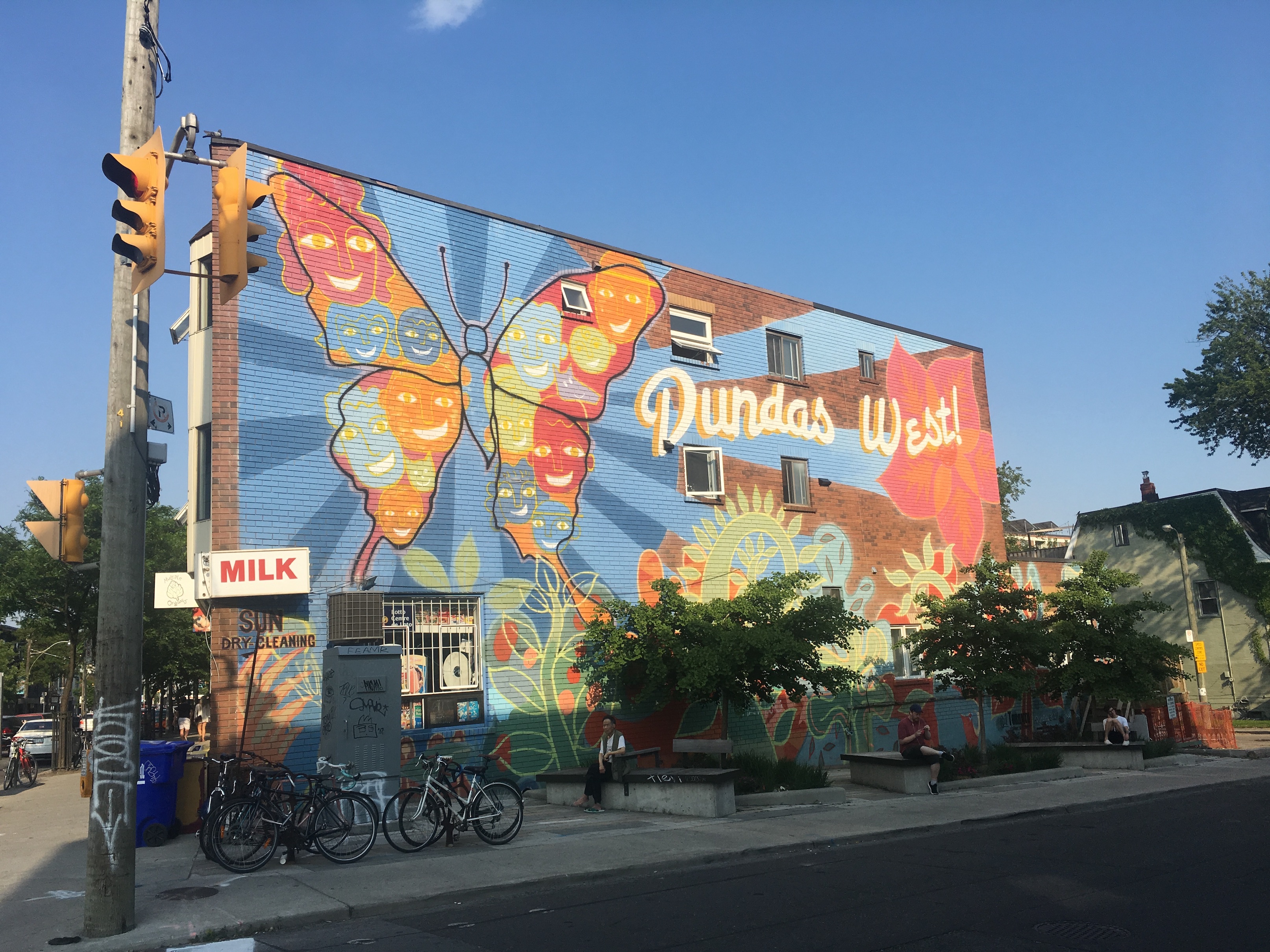 Mural at Dundas and Sheridan, photo by Salena Barry
Mural at Dundas and Sheridan, photo by Salena Barry
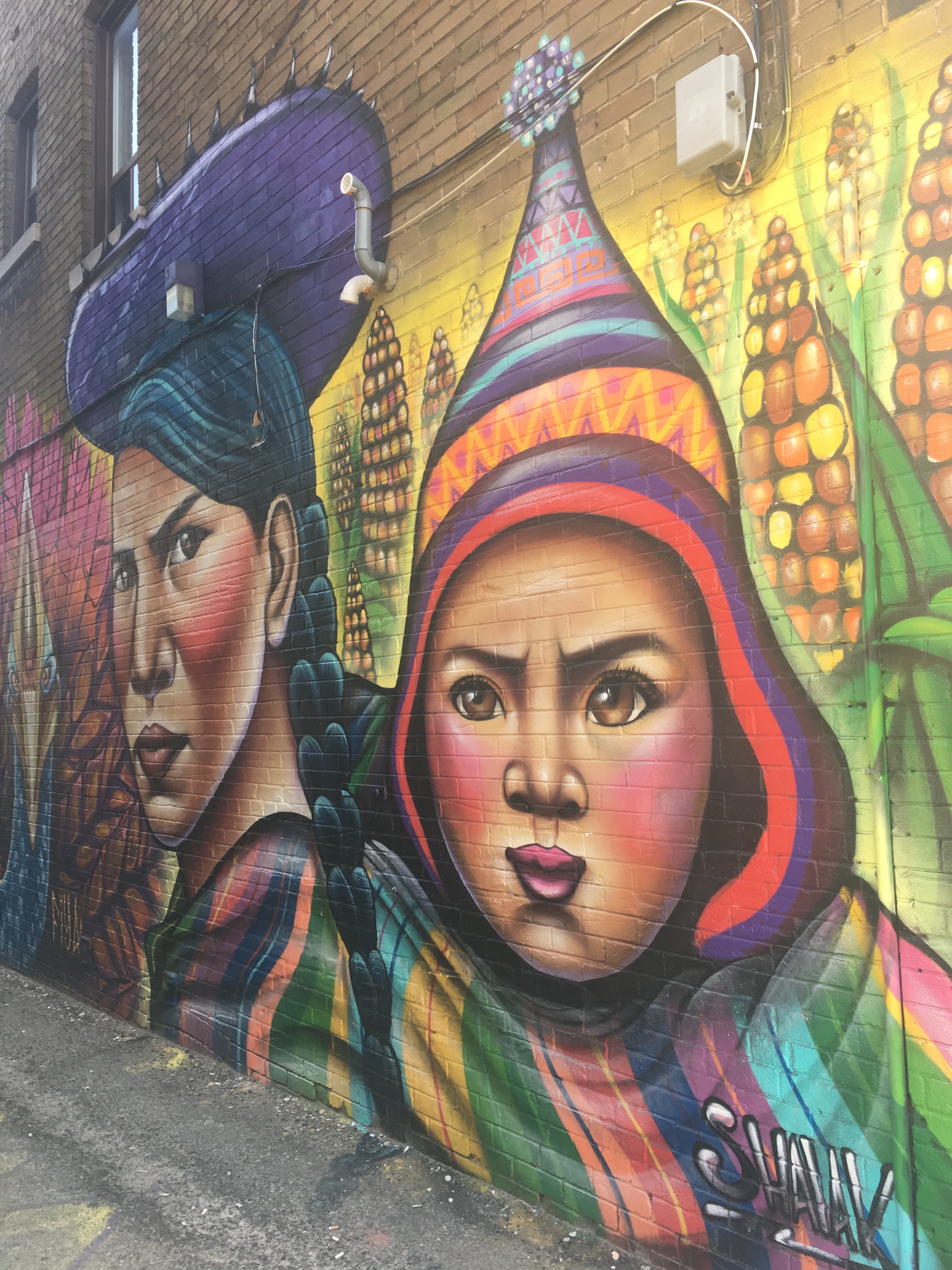 Mural on East Wall of Lula Lounge, photo by Salena Barry
Mural on East Wall of Lula Lounge, photo by Salena Barry
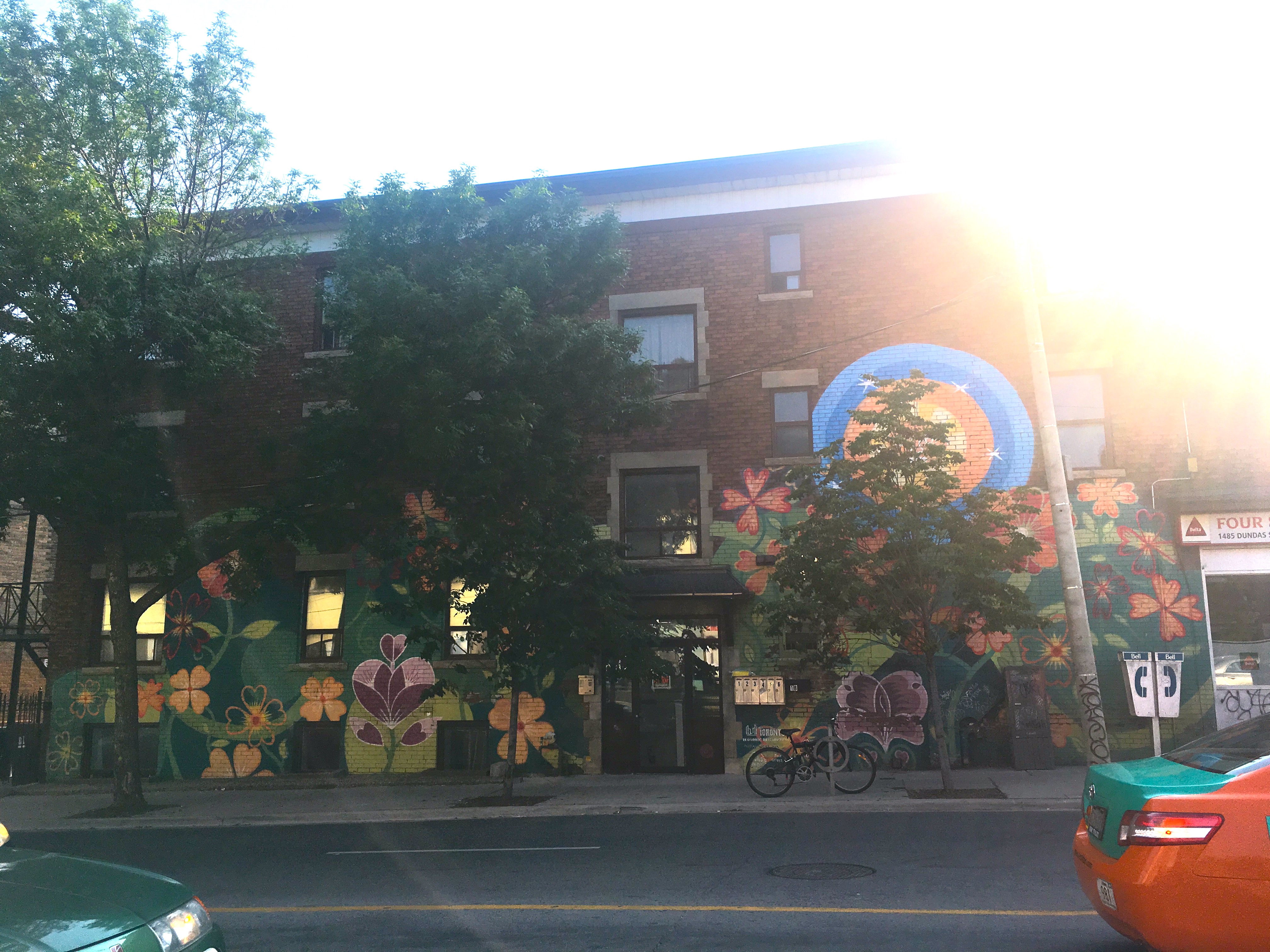 Mural at Dufferin and Dundas streets, photo by Salena Barry
Mural at Dufferin and Dundas streets, photo by Salena Barry
The Dundas and Dufferin neighbourhood is not at a loss for depicting its diversity through its street art. These two new additions to the area add to the many works that celebrate not only the people in the neighbourhood, but showcase diversity of artistic styles. Walking around the neighbourhood there are murals that depict everything from South American culture, to a psychedelic cat and mouse, to decorative florals adorning the side of an apartment building.
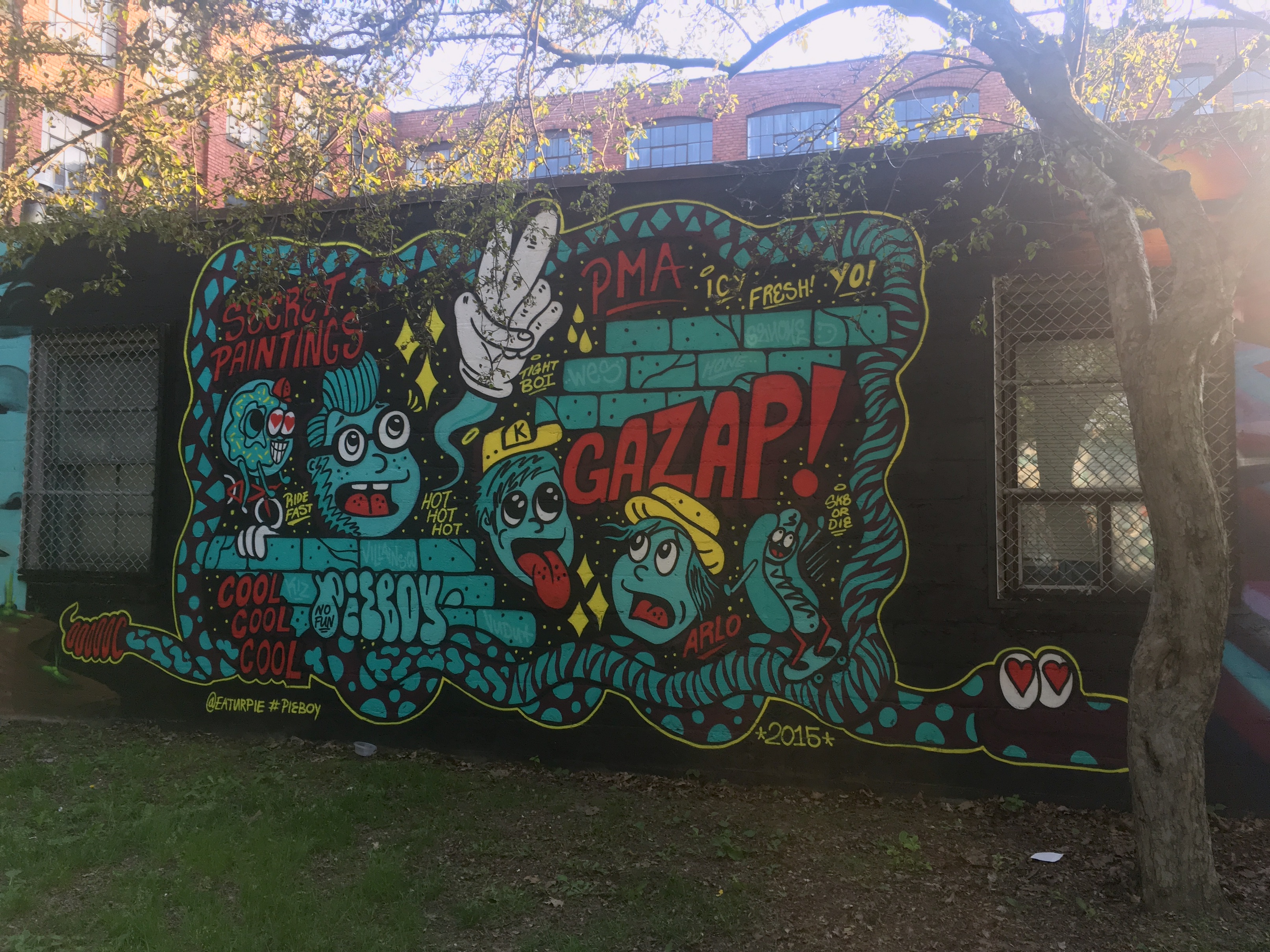 Mural at Charles G. Williams Park, Photo by Salena Barry
Mural at Charles G. Williams Park, Photo by Salena Barry
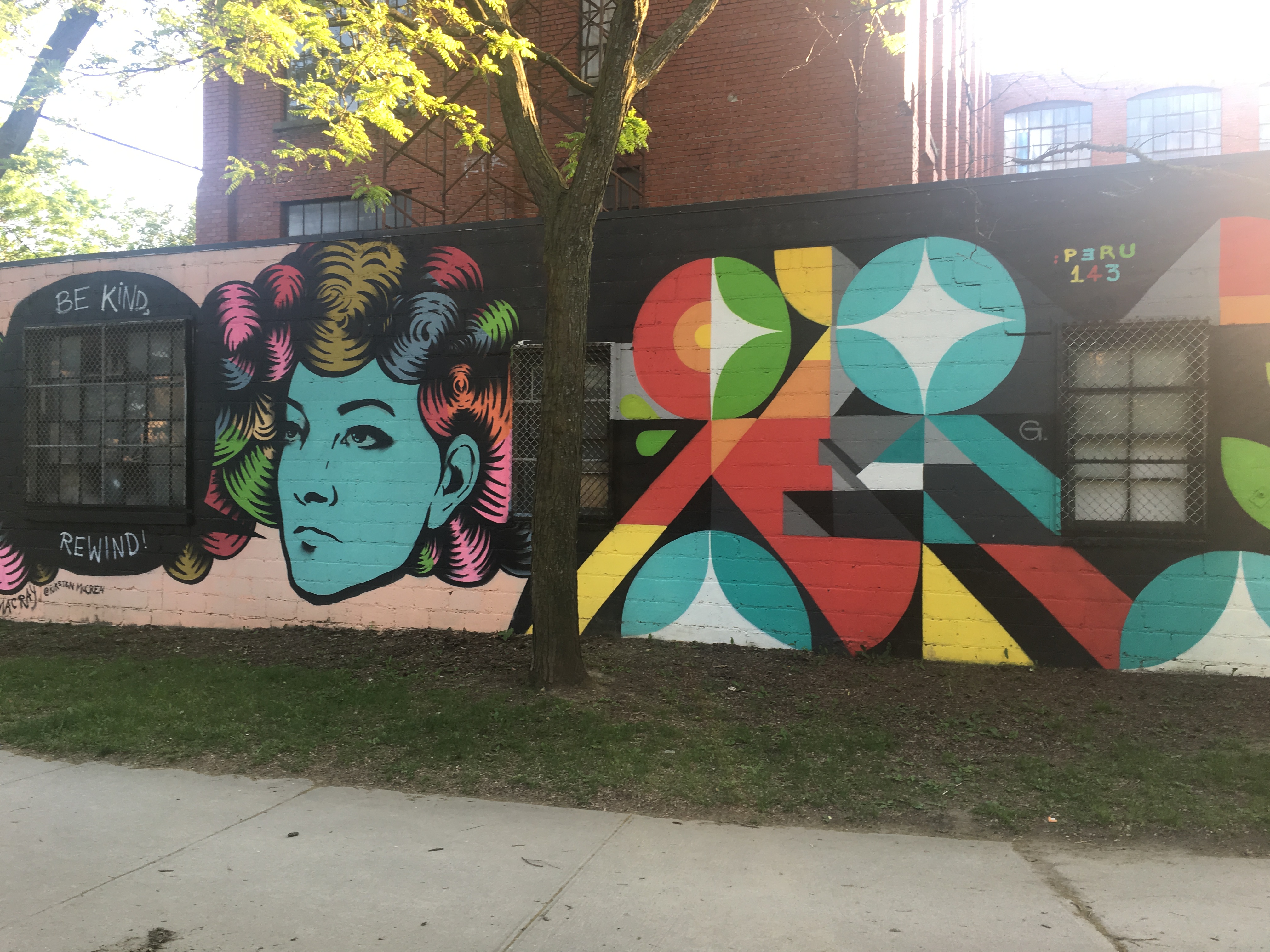 Mural at Charles G. Williams Park, Photo by Salena Barry
Mural at Charles G. Williams Park, Photo by Salena Barry
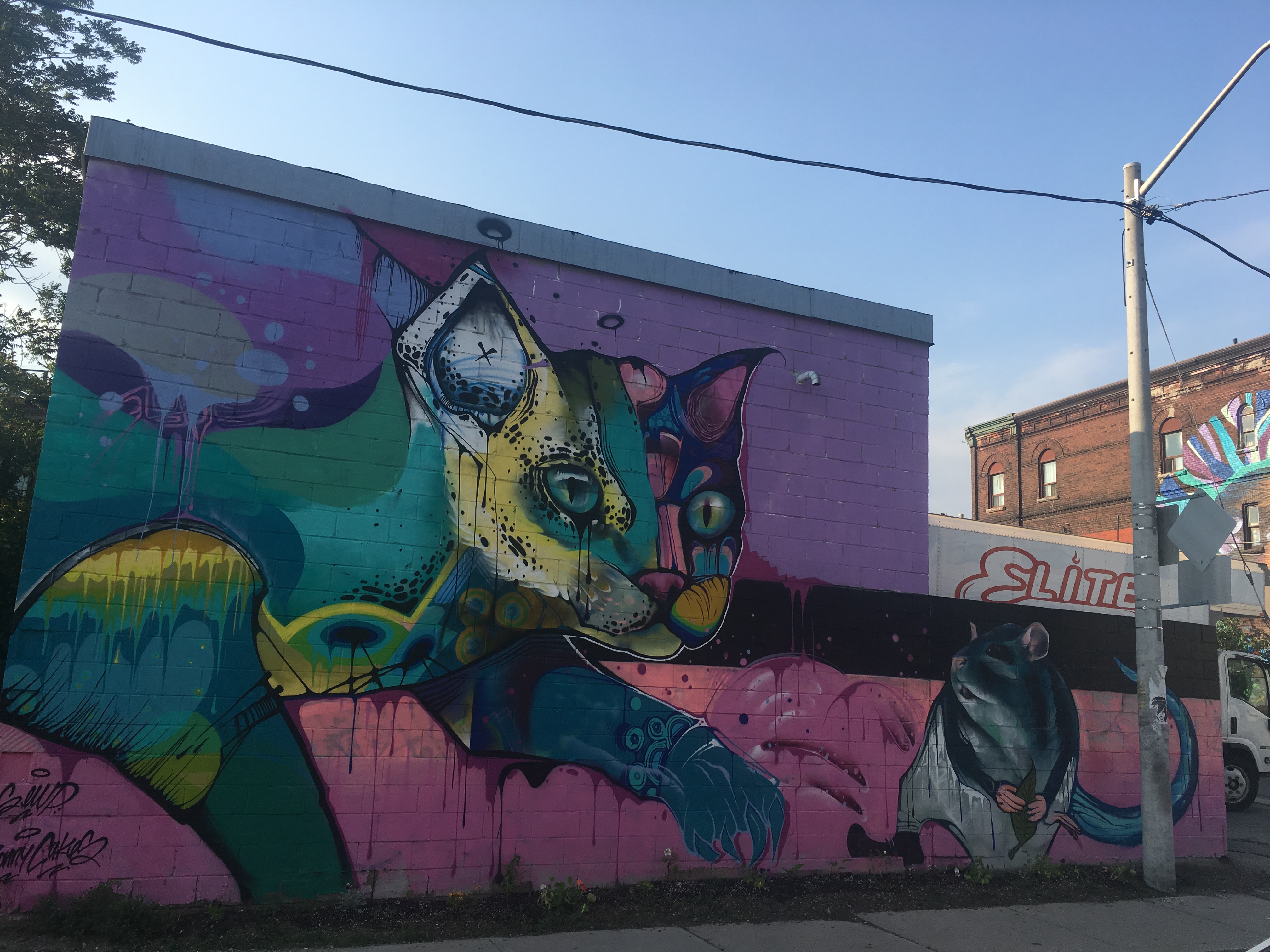 Graffiti Artwork at Dundas and Brock, photo by Salena Barry
Graffiti Artwork at Dundas and Brock, photo by Salena Barry
The new murals add to the vibrancy of a neighbourhood that is home to many great murals that serve to beautify but to create spaces for the many diverse people who live in Toronto. Moreover, they showcase the multiple histories that different neighbourhoods have and how those histories come together to make them what they are today.

 6.1K
6.1K 












